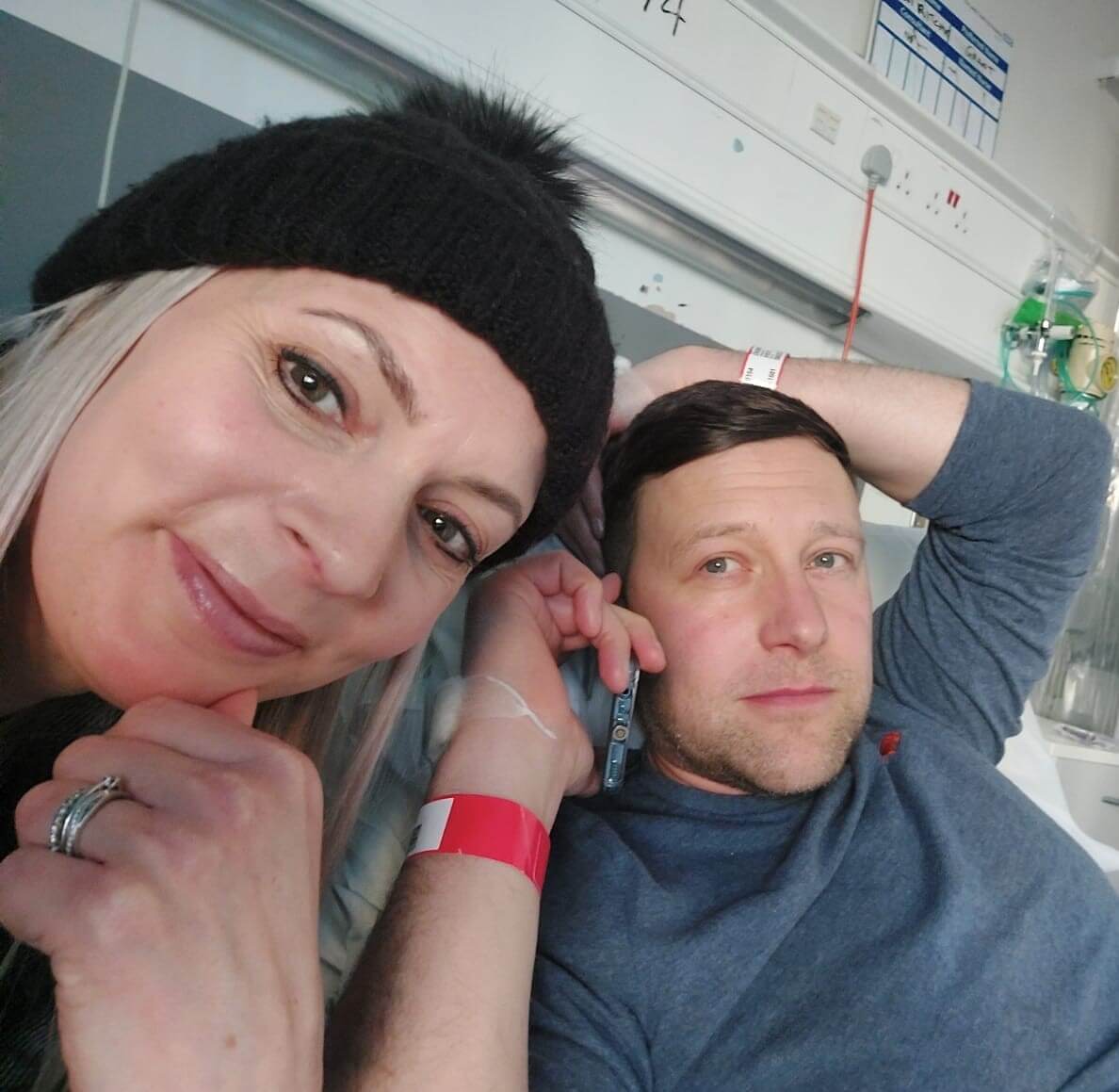LEEDS, United Kingdom — A father in the United Kingdom diagnosed with fatigue due to long COVID has learned that he actually has a brain tumor — which has been growing for 10 years! Grant Churnin-Ritchie kept visiting his doctor after a bout of COVID-19 in July 2021 left him with constant fatigue and a tingling in his right arm.
For several months, doctors reportedly told the 42-year-old that the symptoms were a result of long COVID — but Grant was convinced it was more serious. After blood tests, an ECG, and an MRI scan, it was revealed he had a pituitary tumor. This type of tumor affects the pituitary gland, a pea-sized organ in the brain which controls growth and development.
“I kept going to my GP who said I had long COVID. This went on for several months, but I really didn’t feel well in myself and felt it was something more serious,” says Churnin-Ritchie, a Microsoft specialist from Leeds, in an online video.
“I was so tired and I was experiencing a tingling sensation in my arms. I had blood tests and an ECG at Seacroft Hospital in Leeds, which revealed an abnormal heartbeat.”
Grant says doctors also told him he had adrenal insufficiency (where the adrenal gland doesn’t make enough hormones) and hypothyroidism (an underactive thyroid gland). However, these are also symptoms of a pituitary tumor.
“An endocrinologist at St James’ University Hospital said it could be caused by COVID or a pituitary tumor,” the father of three says online. “An MRI scan confirmed it was a brain tumor which had probably been growing for 10 years.”
Scroll down to see 7 symptoms that may actually be long COVID

Grant waited 11 months for his operation before surgeons removed the tumor in January of 2023.
“Soon after, I started to feel a lot better. Removing the tumor allowed some of the adrenal gland to start functioning again. Even though I now have to take medication, I can lead a normal life. Even though surgeons removed the tumor, there is a 20 percent chance of it growing back. I have an MRI scan in July so I should know more then.”
With the tumor behind him, Grant celebrated by raising money in the Leeds Half Marathon for Brain Tumor Research in May, alongside his wife, Hannah.
“Being able to run the half marathon with my wife Hannah was great, and I’m glad to be able to raise awareness of brain tumors. Because I only had two months to train for the race, I found it very hard to complete. Luckily, I had my wonderful family and friends cheering me on which got me through it. I wanted to give something back, and this was my way of saying thank you to the medical teams and Brain Tumor Research for what they do for people with this disease.”
“We’re really grateful to Grant for taking on the Leeds Half Marathon as it’s only with the support of people like him that we’re able to progress our research into brain tumors and improve the outcome for patients like him who are forced to fight this awful disease,” adds Matthew Price, community development manager at Brain Tumor Research.
Long COVID has 7 persistent symptoms
COVID researchers have been studying long COVID for almost as long as the viral itself. While some teams have identified more than 200 symptoms with a link to long COVID, one study argues there are typically only seven which patients persistently experience for weeks, months, and possibly years.
The seven long COVID symptoms are:
- Rapid heartbeat
- Hair loss
- Chest pain
- Fatigue
- Joint pain
- Shortness of breath
- Obesity
“Despite an overwhelming number of long COVID symptoms previously reported by other studies, we only found a few symptoms specifically related to an infection from SARS-CoV-2, the virus that causes COVID-19,” says corresponding author Chi-Ren Shyu, director of the MU Institute for Data Science and Informatics, in a university release.
South West News Service writer Hannah Van De Peer contributed to this report.

